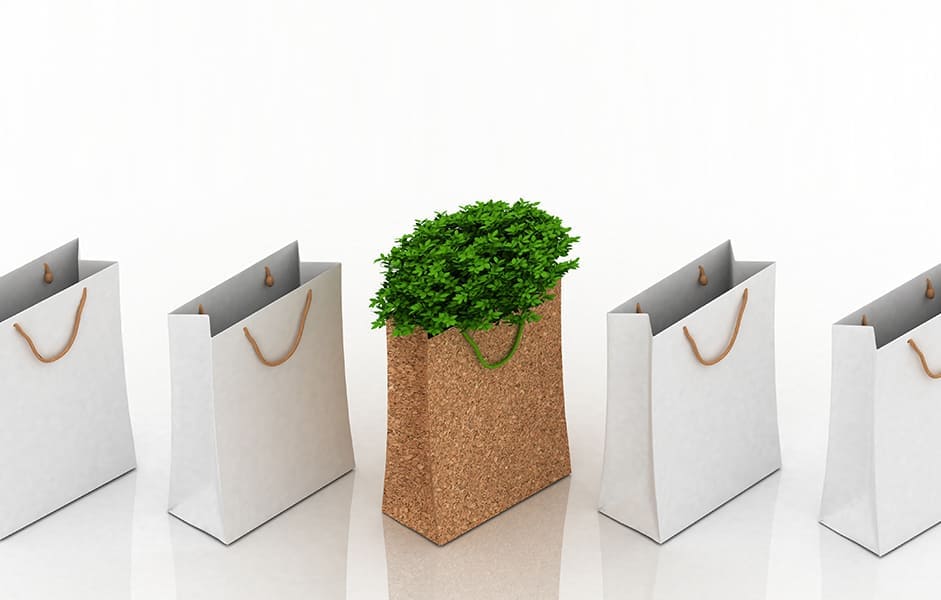PAPER BAG
The paper bags we recommend have high quality and are designed to be re-usable. Not only do our bags function as shopping bags,
they also play an integral role in advertising and promotional purposes.

Original paper bags tailored to client needs
The history of paper bags in Japan dates back to the United States in 1923. At that time, expat employees of trading companies there sent kraft paper bags to Japan to be used as cement bags marking the beginning of its widespread use. It has been nearly 100 years since then and everything from paper materials, forms, technological improvements for printing and processing, to design representation has expanded and continues to evolve every day. We have over 40 years of experience since the founding of our company and channel our expertise and experiences into making paper bags that are tailored to our clients’ needs.

Various types of papers, materials, and processing techniques to enhance added value
We offer an extensive range of variations to choose from, such as paper with a natural feeling called kraft paper, coated paper with excellent color gloss and luster, thick paper called paperboard, or paper with patterns already embossed.
Also, a diverse selection of materials and forms to decorate bags with are available: Acrylic and Polypropylene based materials for hand straps as well as ribbons with satin or grosgrain. Coupled with processing features such as print embossing to add texture or a 3D appearance, gold or silver leaf stampings, add more value to any product.
Our experts will combine the limitless combinations of options to ultimately create an original, “one of a kind” product that is both unique and adds value to your business.

Environmental sustainability
In recent years, eco-friendly initiatives have become more active all over the world. The approach to tackle these issues vary for different materials and we continuously conduct research on how we can do our part each and every day.
Paper bags for repeated use, instead of disposal after single use.
In 2018, we acquired FSC COC, a forest management certification for environmental protection and proudly continue to promote the idea of “re-usable design and quality” that assumes the re-use of bags so that they do not simply end up in the trash or landfills.

